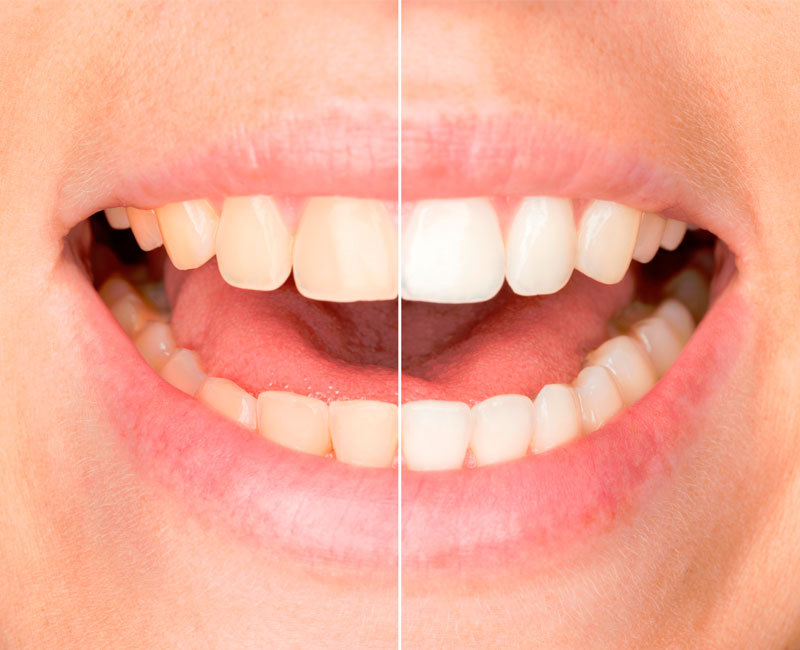During the last two decades the number of tooth whitening products on the market have increased significantly. With so many options out there, it can be hard to find the one that’s best for you. When choosing an option for ‘whitening’ there are many things we need to consider. First of all, how sensitive are your teeth? How compliant are you? How much are you willing to spend? Are your teeth stained internally or are they just surface stains? All of this helps when we come to choose which approach we want to make your teeth whiter.
Whitening products come over the counter in bleaching strips, toothpastes and mouth rinses. Some are prescribed by your dentist for at home use, like take home trays. Others are performed in the dental office by your dentist.
Carbamide peroxide, which is used in many bleaching products, is broken down into hydrogen peroxide (which is the active bleaching agent) and urea. A product which has 10% carbamide peroxide is equal to 3.5% hydrogen peroxide. The most common side effects of bleaching with these products are tooth sensitivity and irritation of the gums and other soft tissue of the mouth. This sensitivity is usually temporary and goes back to normal after the treatment. The irritation of the soft tissue can be significantly decreased by using properly fitting trays made by your dentist or by using proper isolation methods while doing in office bleaching. Minor irritation is expected but is also reversible.
At Home Bleaching Methods– these are generally either OTC or dispensed by your dentists for at home use. They tend to have a lower concentration of active bleaching agent but can yield good results when used properly. Bleaching strips and take home trays are used for approximately 2 weeks for a varied amount of time each day (depending on the product). The benefits are;
-You have total control of the process. If you become sensitive after a day or so, you can rest on the next day and pick it up again when you are ready. This may prolong your bleaching experience but sometimes its worth the comfort of not dealing with the sensitivity.
-These at home methods are generally cheaper.
-You also have a tray or strips that you can use to ‘touch up’ every few months.
The drawbacks of these methods are;
– You have to be more compliant.
– It takes longer to get the same results.
– You have to be more cautious with what you eat and drink for the total time you bleach. ie. Coffee, red wine etc.
In Office Bleaching Methods– This is done in the dental chair by your dentist. The appointment takes approximately 45 minutes to 1 hour. They will protect your gums and soft tissue, then apply a strong bleaching agent to your teeth for 15-20 minute sessions. The whole process is monitored by the dentist and the dental team. The benefits of this method are;
– You get the results in a 1 hour session.
– Compliance is minimal since the dental team does most of the work
– It uses the strongest bleach and most accurate technique for bleaching.
The Drawbacks are;
– It is more expensive.
– You may feel more sensitivity.
So, if you are thinking about bleaching then a thorough examination by your dentist is recommended to address any sensitivity issues that may be associated with cavities, infection or broken teeth. Together with your dentist you can decide on a whitening method that is best for you.
Enjoy the results and keep smiling!

